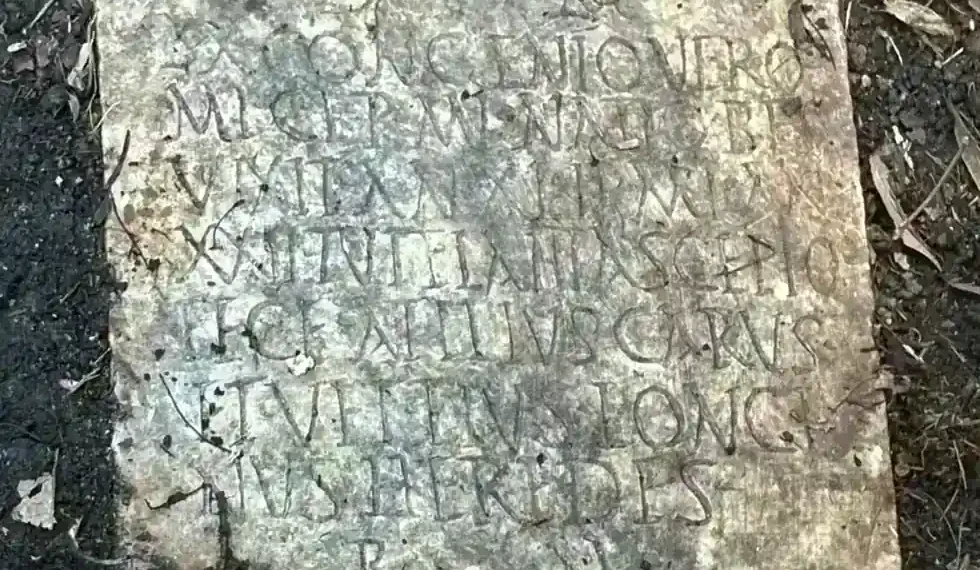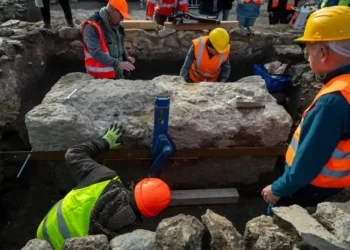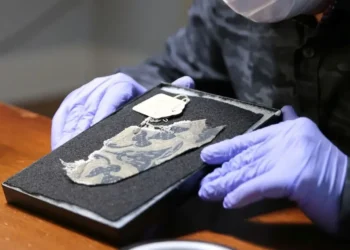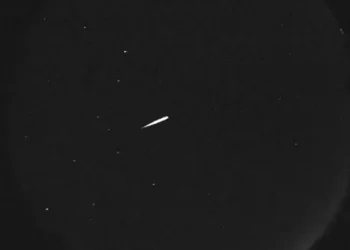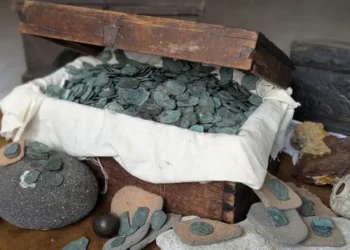Published: October 14, 2025, 22:10 EDT
Archaeologists Identify 1,900-Year-Old Roman Artifact in Louisiana Home
A New Orleans family made a remarkable discovery while clearing their overgrown backyard — a 1,900-year-old Roman marble gravestone believed to have been missing from an Italian museum for decades. The tablet, engraved with Latin inscriptions including the phrase “spirits of the dead,” has since been identified as the ancient grave marker of Sextus Congenius Verus, a sailor who served in the Roman imperial navy.
The Unusual Find That Sparked Archaeological Investigation
Anthropologist Daniella Santoro of Tulane University said the family was initially startled by the Latin inscription. “The fact that it was in Latin really just gave us pause,” she told reporters. “You see something like that and realize it’s not an ordinary thing.”
Santoro contacted her colleague, classical archaeologist Susann Lusnia, who quickly recognized the artifact’s extraordinary significance. “When I first saw the image that Daniella sent me, it sent a shiver up my spine,” Lusnia said. “I was floored.”
Further research confirmed that the marble slab matched a Roman funerary inscription documented in 1910, which was once held by the National Archaeological Museum in Civitavecchia, a coastal city northwest of Rome.
Missing Since World War II
Historical records show that the Civitavecchia museum, which housed numerous Roman naval artifacts, was destroyed during World War II bombings. Many items were lost or looted in the aftermath.
According to Lusnia, the gravestone’s measurements — roughly one square foot and one inch thick — perfectly matched the original catalog entry. “You can’t have better DNA than that,” she said, noting that museum officials confirmed the tablet had been missing for decades.
The stone commemorates Sextus Congenius Verus, who died at age 42 after more than twenty years of service aboard a ship named for the Greco-Roman god of medicine, Asclepius. The inscription praises him as “well deserving” and was commissioned by two “heirs,” likely his fellow sailors, since Roman soldiers and sailors at that time were legally prohibited from marriage.
From Ancient Italy to Modern Louisiana
How the 1st- or 2nd-century artifact ended up in New Orleans remains a mystery, but clues have begun to emerge.
As news of the discovery spread, Erin Scott O’Brien, a previous owner of the home, came forward saying she recognized the marble slab immediately after seeing it on television. “I always thought it was just a cool piece of art,” she said.
O’Brien explained that she had received the artifact from her grandparents — an Italian woman and a New Orleans man stationed in Italy during World War II. The piece had been displayed as a garden ornament for years before being left behind when the house was sold to Santoro in 2018.
“None of us knew what it was,” O’Brien added. “We were watching the news in shock.”
Repatriation Talks Underway
The discovery has prompted the FBI and Italian authorities to initiate discussions on the tablet’s formal repatriation to Italy. The agency has not yet issued an official statement due to the ongoing U.S. government shutdown, but experts say the artifact’s provenance appears authentic and well-documented.
If returned, the gravestone will likely be reinstated at the Civitavecchia Archaeological Museum, closing a historical loop that began nearly two millennia ago and was interrupted by war.
A Roman Legacy Remembered
For scholars, the rediscovery of the gravestone is not just an archaeological event but a symbolic resurrection of memory. Grave markers were vital in ancient Roman culture, serving as a way to preserve a person’s name and deeds for eternity.
“Now Sextus Congenius Verus is being talked about so much,” Lusnia reflected. “If there’s an afterlife and he knows, he’s very happy because this is what a Roman wanted — to be remembered forever.”
The unexpected find highlights how the remnants of ancient history can resurface in the most unlikely places — even a quiet backyard in modern-day New Orleans.
This article was rewritten by JournosNews.com based on verified reporting from trusted sources. The content has been independently reviewed, fact-checked, and edited for accuracy, neutrality, tone, and global readability in accordance with Google News and AdSense standards.
All opinions, quotes, or statements from contributors, experts, or sourced organizations do not necessarily reflect the views of JournosNews.com. JournosNews.com maintains full editorial independence from any external funders, sponsors, or organizations.
Stay informed with JournosNews.com — your trusted source for verified global reporting and in-depth analysis. Follow us on Google News, BlueSky, and X for real-time updates.
